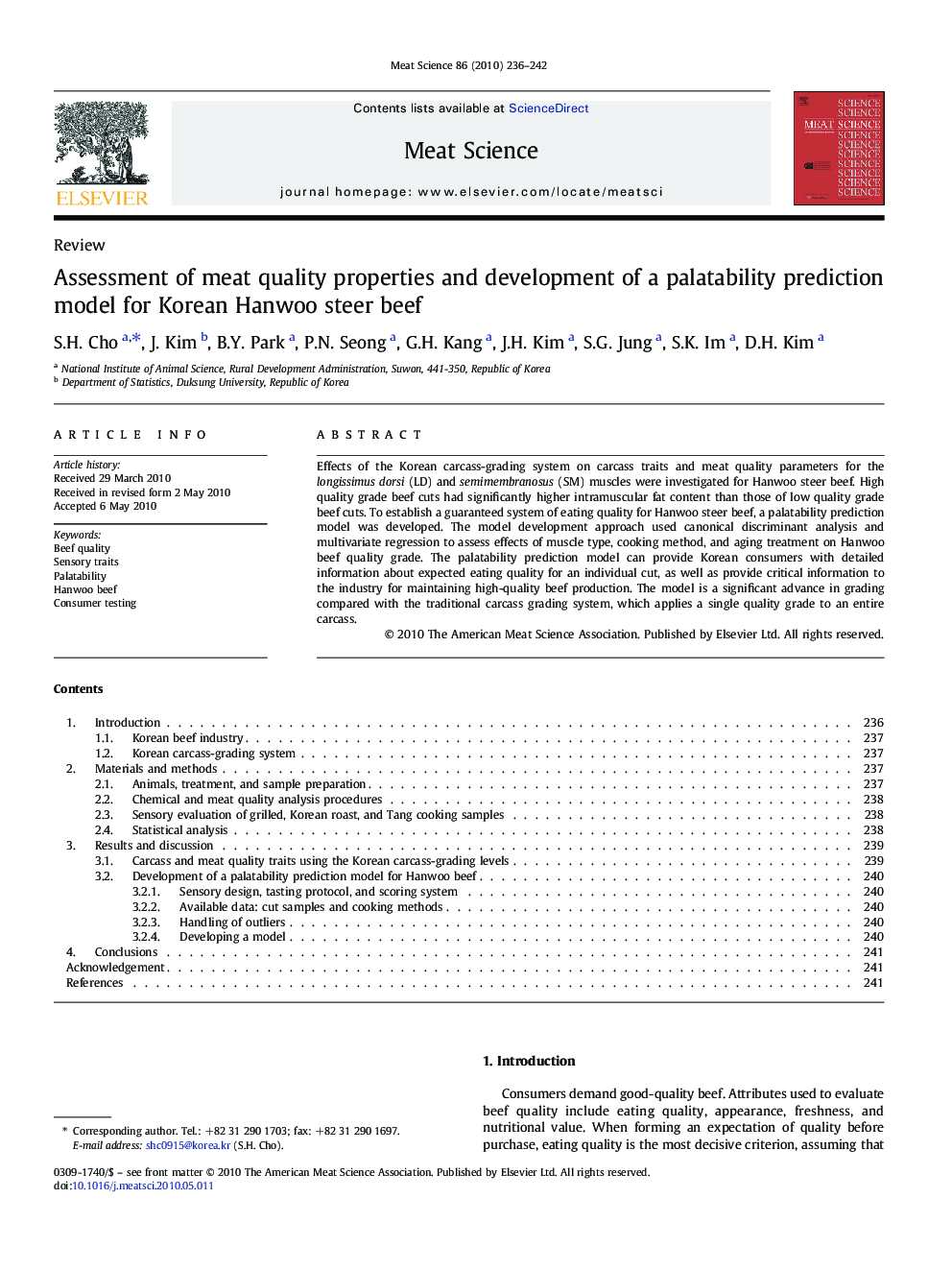| Article ID | Journal | Published Year | Pages | File Type |
|---|---|---|---|---|
| 2450858 | Meat Science | 2010 | 7 Pages |
Effects of the Korean carcass-grading system on carcass traits and meat quality parameters for the longissimus dorsi (LD) and semimembranosus (SM) muscles were investigated for Hanwoo steer beef. High quality grade beef cuts had significantly higher intramuscular fat content than those of low quality grade beef cuts. To establish a guaranteed system of eating quality for Hanwoo steer beef, a palatability prediction model was developed. The model development approach used canonical discriminant analysis and multivariate regression to assess effects of muscle type, cooking method, and aging treatment on Hanwoo beef quality grade. The palatability prediction model can provide Korean consumers with detailed information about expected eating quality for an individual cut, as well as provide critical information to the industry for maintaining high-quality beef production. The model is a significant advance in grading compared with the traditional carcass grading system, which applies a single quality grade to an entire carcass.
